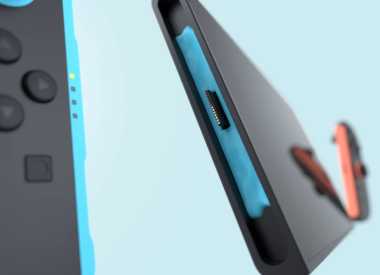Following the acquisition of UFC’s license from THQ, Electronic Arts released EA Sports UFC on June 17, 2014. It filled a void for MMA and simulation fighting games in general (RIP, Fight Night), but was met with lukewarm reception at best.
Determined to satisfy diehards and attract new casual fans, EA has returned with the revamped EA Sports UFC 2. I had a chance to meet with creative director Brian Hayes, who outlined state-of-the art gameplay features while showcasing the soon-to-be released title. Disclaimer: I have little experience with fighting games, and Hayes proceeded to embarrass me despite playing in handicap mode.
Hayes acknowledges that UFC 1 was unpolished and lacked depth. Telemetry and gamer feedback helped him and his team recognize that UFC 2 needed more features. “We realized that there’s a diverse environment of UFC fans, and we had to find a way to put something in there for every single one of them.” The result is a complete overhaul of existing gameplay, with the addition of several brand-new modes for various breeds of gamers.
Live and Custom Events

Hayes begins his demonstration with “live events,” a new mode that allows players to predict and simulate real-world UFC matches. Data research revealed that gaming activity increased during weekends of actual UFC fights. “Let’s say Donald ‘Cowboy’ Cerrone was fighting this weekend,” he explains. “We would see something like a 245% increase in his usage from the previous weekend.”
Players can follow the UFC schedule and forecast results 1-2 weeks before the real-world event. Once predictions are placed on the winning fighter, method of victory (KO or TKO) and round it will be achieved, users have the option of either playing or CPU simulating the match to earn points toward an “event score.” A high event score can unlock free packs for ultimate team, another new mode which we’ll get to momentarily.
“It’s a totally new way to interact with the world of UFC,” says Hayes. Participating players also rise or fall down leaderboards, which can be used to track global rankings and/or compete with friends.
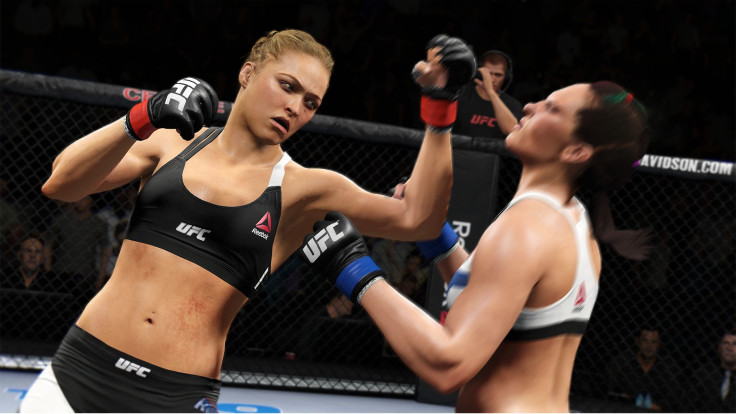
Another new mode centered on UFC’s scheduling system is “custom events,” which enables players to “design your own pay-per-view,” as Hayes says. Players can create an 11-fight event and choose its venue along with match settings (fighters, referees, clock speed, etc.). Similar to live events, you can either play-out the matches against friends, the CPU or simulate the entire tourney.
Hayes suggests utilizing custom events for social gatherings. “You can have a bunch of buddies over and create a dream event.”
Ultimate Team
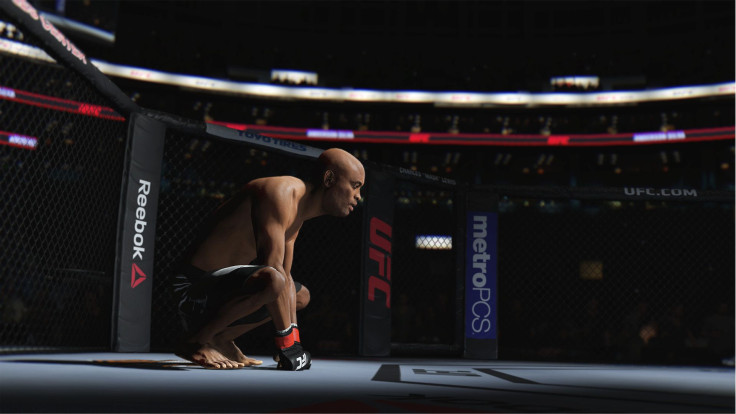
Taking note of its success in other EA Sports games, Hayes and his team developed UFC 2’s most ambitious new feature - ultimate team. The trading card fantasy league is by far the most popular mode in FIFA and Madden, and their versions serve as partial inspiration for UFC 2’s. Like those games, the goal of UFC 2’s ultimate team is to play matches and earn in-game currency to buy packs, which in turn upgrade your customized team.
But since MMA is not a team sport, drastic changes were made to the mechanics of UFC 2’s ultimate team. You do manage a unit of five fighters, which belong to varying divisions of MMA: lightweight, middleweight, heavyweight and women’s. However, instead of assembling a squad of real-life athletes like you would in FIFA or Madden, you create each player from scratch.
With your custom-built team of fighters, you challenge rotating classes of opponents and earn in-game money to buy packs. In each pack are randomized cards of items used to improve your group’s moves and abilities. Some are universal, others are weight class specific. “All your fighters can help each other out,” says Hayes. “You might have a couple of fights with your middleweight guy, buy a bunch of packs and get some universal items. But you also might get two or three women’s division items or two or three heavyweight items.”
Items range from attribute boosters to customized combat techniques, which Hayes compares to FIFA in-form players. Here’s an example from him: “Jon Jones is fighting Daniel Cormier [on April 23]. Let’s say [Jones] knocks out Cormier with a spinning back elbow. Next day, there’s a brand new Jon Jones ‘Move of the Night’ level 5 gold edition spinning back elbow card with awesome attribute boosts. It’s gonna be a super rare drop in the packs, but you can go in there, chase that item, and equip it on your guy. If used it will be devastating in gameplay.”
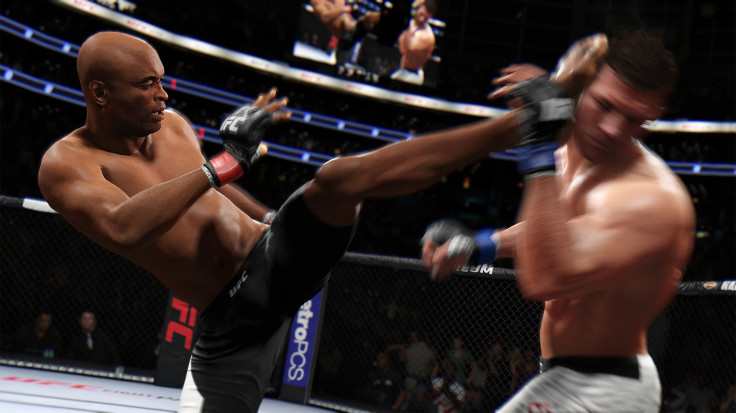
Similar to its EA Sports counterparts, UFC 2’s ultimate team will feature a division system. But since UFC doesn’t run on a seasonal schedule, tier progression has been adjusted as well. Players now advance through belt acquisition: white, blue, red, brown, black and so on. Winning a certain amount of matches will promote the player to the next color, but team’s can also challenge for a title belt after four wins in a row. Again, this is to accompany UFC’s lack of distinct seasons. Hayes also believes there is a flaw in FIFA/Madden’s method of divisional progression:
“If I have been playing all day, it’s like 12:45 at night and I’m thinking I just want to get to the black belt... if I lose that fight, I’m definitely going to bed now because I’m right back to square one. I don’t have time to have the other 10 fights again to get back up there. Our new system is constantly fluid. I might be two points away from getting promoted to division five. If I lose a fight, maybe I’ve just lost 6 points. I’m still potentially only two fights away from getting into a new division, so I’m not just gonna pack it up. You don’t lose all of your progress, you’re constantly going up and down from wherever you’re plateauing from.”
The “title-chase mechanic” is also separate from the divisional progression system. This ensures that whenever you go a four-game winning streak, you are deemed a “contender.” Once you are a contender, UFC 2’s algorithm will match you online with another player who is either an existing champion, or a contender themselves. “Both fighters know this is the title fight,” explains Hayes. “Only one is leaving with the title and they both know what the stakes are, rather than one thinking ‘This means everything to me,’ and the other saying “It’s my first time in purple belt!”
Knockout Mode

This is the feature Hayes and I play together, as he contends that it’s best for beginners and casual fans. As the name suggests, the objective of knockout mode is to not only KO your opponent, but also spar unbothered by the intricacies of MMA grappling. The right analog stick, which is used to engage in submissions, is not used at all. You simply punch and kick until your competitor goes down.
“We talked to some fans and they were like, ‘Look, I’m a huge UFC fan, but when my buddy comes over to play we just have a house rule that if the fight goes to the ground we just stand up.’” says Hayes.
Hayes proceeds to knock me out in five consecutive rounds, all while explaining the importance of these varying new features. “Our mission statement this year was ‘Finish the fight.’ There’s a big focus on new knockout physics. It’s one of those things that everybody loves no matter what kind of user you are, whether you're the hardcore online gamer who likes to be competitive, or someone who likes to mess around with his friends. The next part is that we create experiences in the game for everyone of those users to enjoy the gameplay. There has to be a mode for every fight fan and we give them the tools to master this game and make sure that ‘Finish the fight’ moment is emotionally stunning.”
Career Mode
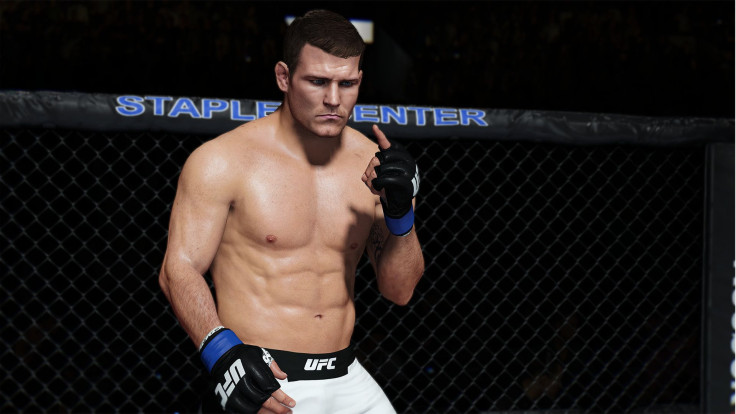
The bread-and-butter of any sports simulation game, career mode has been considerably updated for UFC 2. As usual, you create your own player, but fighter progression has been revamped this time around. Last year, the evolution points you earned for fighting and training - no matter what kind of training - could be used wherever you wanted. Attributes, moves, perks - all were fair game. In UFC 2, you’ll have to be more sensible than that.
“Before, I could train jiujitsu, earn points and upgrade my striking power,” says Hayes. “This year you actually have to make decisions.” He flips through the menus and enters the training gym, where he is informed that he cannot train “stand-up” because that coach has the flu. Instead, he opts to work on clinch training. Now the only attributes he can upgrade are related to that technique.
Training camp also has a quality meter: easy, medium and hard. Easier workouts are safe, but earn evolution points slower. Harder drills get quicker results, but increase your chances of injury. Speaking of injury, there are two types you can suffer - inevitable “wear and tear” and serious damage. Wear and tear builds over time and gradually bumps down your attributes, but they can be earned back. Actual injuries last temporarily but severely affect your next fight. Then there’s overall career damage, which is measured with a meter. The higher it gets, the more dangerous it becomes to train aggressively. If the career damage meter crosses a threshold, your fighter will be forced to retire.
Dynamic Grappling

It’s not a mode, but Hayes believes that the introduction of “dynamic grappling” will innovate gameplay for not only EA Sports UFC 2, but all future MMA titles. In prior MMA games like UFC Undisputed, ground fighting was defined by the first user to engage. The opponent could then only defend the submission attempt, rather than countering with an attack. With UFC 2’s dynamic grappling, it’s now possible for both players to engage at once.
“It’s a lot more of a fluid grappling system,” explains Hayes. “I can start trying to get up while you simultaneously counter. The ‘Grapple Assist HUD’ shows options for the position you’re in, how to do them by pushing the correct direction on the analog stick, and how long it will take.
“We even did tests where people played UFC 2 without the grappling HUD on,” he continued. “They would say things like, ‘I took him down and kinda landed half on top of him. And then I moved him, and then I was on the side, then I got all the way on top of him.’ People with the HUD on would say, ‘I took him down with a single leg, then I was at half guard, then I transitioned to side control and then I got full mount.’ It’s one of the single best and biggest improvements to not only our game, but the genre as a whole.
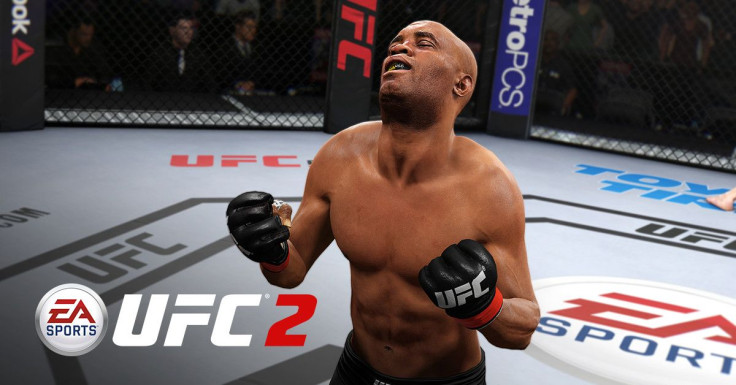
“Being able to have two guys attempt to do something at the same time rather than responding to the opposition in a turn-based system is pretty revolutionary for UFC games,” says Hayes in closing. “It was a significant technology investment in animation and dramatically changes the way fighting on the ground feels.”
EA Sports UFC 2 releases on PlayStation 4 and Xbox One on March 15 in North America. The game hits European shelves two days later on March 17. For questions or comments about this piece, leave a message below or tweet to @aricwithan_a.

















